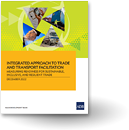How can we unlock the potential of small enterprises?
On May 18, 2012, a former microenterprise, founded by 5 university roommates, was listed on the stock market, accompanied by a lot of media attention. This former microenterprise- Facebook Inc.- was initially valued at more than 100 billion USD by the stock market – more than the combined value of Nike and Goldman Sachs and has more than 2000 employees.
This anecdote is not the only evidence for the potential of small enterprises. Germany for instance is by far the world’s leading country in terms of exports per capita. Much of this success is based on the so called hidden champions – small enterprises that are among the top 3 companies in the world in their respective economic sectors.
In developing countries, small and medium-sized enterprises (SMEs) play an important role in terms of employment and business activity. For example, more than 90% of all commercial entities in the Philippines are SMEs, and they account for more than 70% of employment. A similar picture can be observed in India, where SMEs account for 45% of industrial output and 40% of exports. Small enterprises are also common in West Africa, where small enterprises (averaging 2 employees) account for about 70% of all urban employment.
Soon, a new generation of young people will enter the job market, especially in developing Asia. Many of these young job seekers will probably be working in a small enterprise. In light of the existence of so many hidden champions and potential Facebook-style success stories, the challenge for policy makers in developing countries is how can governments unlock and exploit the potential of the many small enterprises in their countries?
The economic literature has identified a set of constraints to small enterprises in developing countries that hinder them from exploiting their full potential. Some of the major constraints include:
- Access to credit or external funding
- Compounded business risks
- Time / risk preferences and entrepreneurial ability
- Access to markets, inputs and technology
Access to credit is an issue that has been extensively examined. A wealth of evidence exists on this subject, and on the effectiveness of microfinance programs, designed to address the credit constraints facing small entrepreneurs.
Another factor that hampers potentially successful entrepreneurs from enlarging a business is risk. The problem of business risks is especially pronounced in developing countries, where contract enforcement is difficult, legal and bureaucratic barriers are unpredictable and political and economic stability may be lacking. The combination of high business risks and risk aversion on the part of entrepreneurs can lead to stagnation in terms of innovation and productivity for small enterprises. It also means that entrepreneurs have to spend a disproportionate amount of time, effort and intellectual capacity on dealing with or avoiding the various risks, distracting them from their more important and commercially productive core competencies.
The size of local markets and the fact that some technology and/or inputs are not available locally can also constitute important constraining factors for small enterprises. Policy actions that could help to overcome these issues include:
- Identifying potential success sectors for small enterprises (e.g. R&D or software development)
- Provision of testing and quality certification facilities for innovative products (e.g. supporting a firm that has developed a new dairy product to test it and attain certification to export)
- Fast track patent schemes for new innovations to reduce business risks
Overall, evidence from both developing and developed countries shows that small enterprises have huge potential and can play a significant role in inclusive growth. Therefore, the constraints facing small enterprises in developing countries deserve policy attention and sound measures to help entrepreneurs overcome the challenges described in this post.




